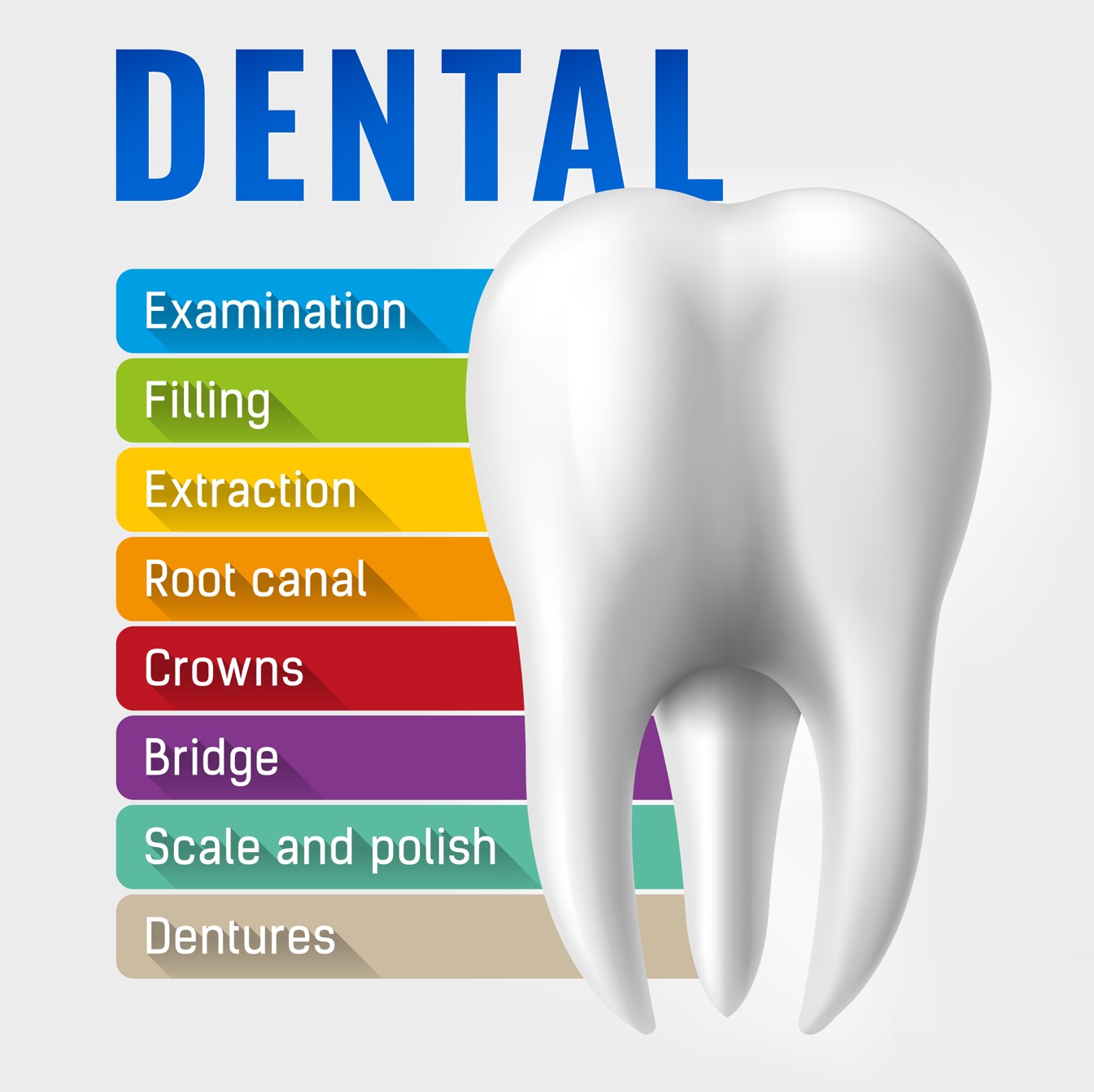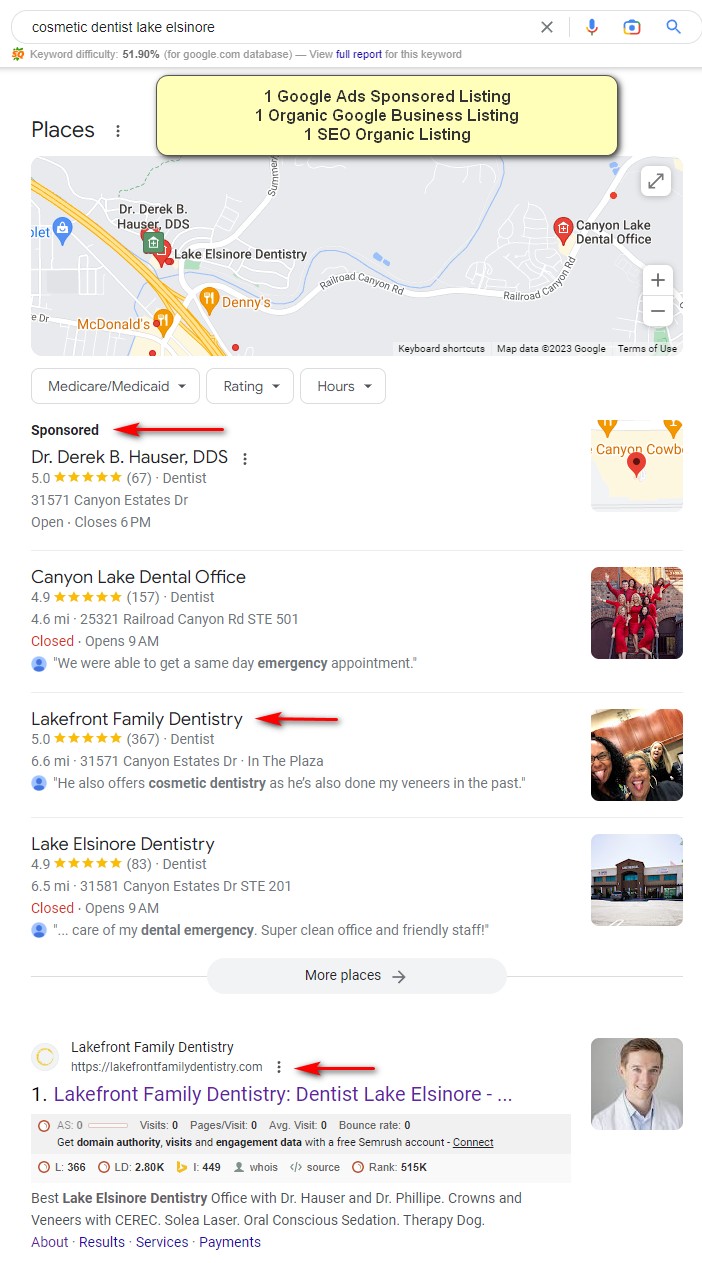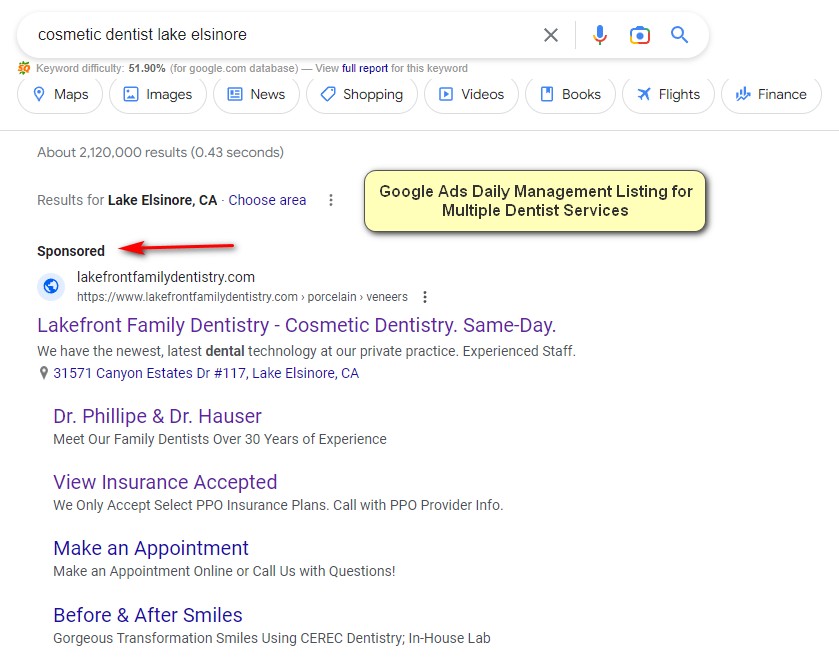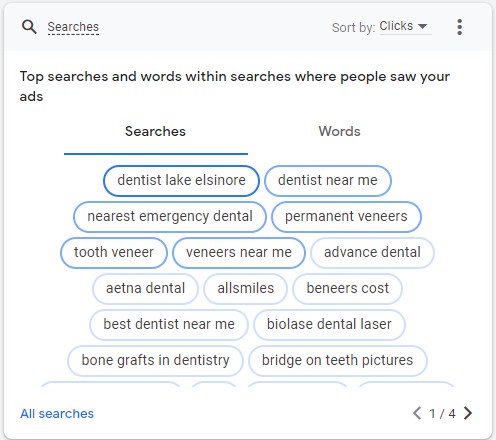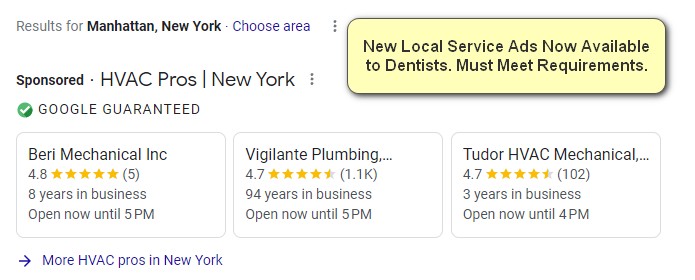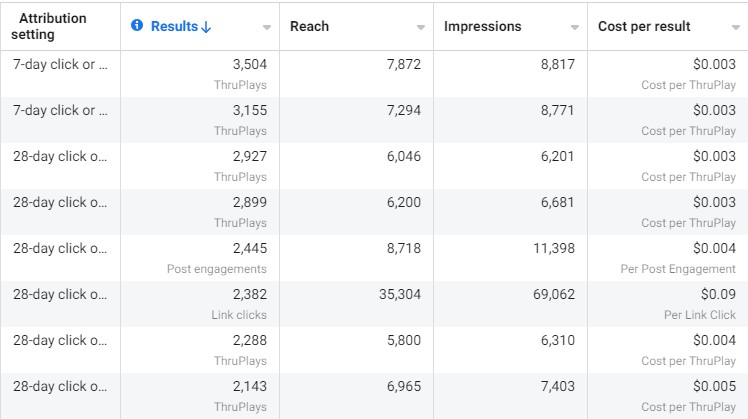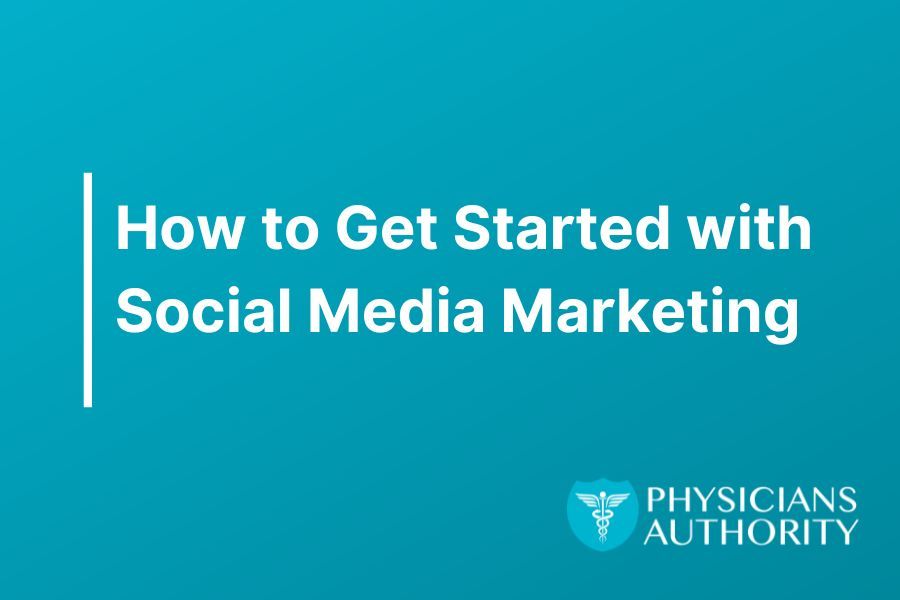Dermatologist Marketing Strategies for Expert Patient Acquisition
Unique Challenges and Opportunities in Dermatology Patient Acquisition
As a medical marketing agency specializing in dermatology, Physicians Authority understands the competitive landscape, demand, and tailored approach it takes to attract new clients for your private practice.
Physicians Authority is providing dermatologists with a detailed, comprehensive guide on patient acquisition strategies with a multi-channel approach that sets us apart from other medical marketing agencies.
Sharing our secret dermatology marketing strategies helps our clients understand the scope and breadth of what we do and how our medical marketing agency can help bring you more quality patients.
Unlocking Dermatologist Practice Growth with a Comprehensive, Multi-Channel Approach
We will discuss the integration of traditional marketing techniques with modern digital marketing strategies, and explore our critical role of content marketing, social media advertising, local SEO, telemedicine (if applicable for your practice), and online reputation management in building a strong patient base.
There is also a key element and critical importance of tracking and analyzing key performance indicators to optimize these strategies.
In the competitive dermatology market, patient acquisition is both a challenge and an opportunity. Dermatologists face unique obstacles, such as standing out in a crowded field, connecting with potential patients, and showcasing their expertise.
To overcome these challenges and grow their practices, doctors must employ a comprehensive, multi-channel approach to patient acquisition, integrating traditional and modern digital marketing strategies.
Understanding the Target Audience: Creating a Patient-Centric Approach
Achieving success in patient acquisition hinges on a deep understanding of the target audience and their unique preferences. Doctors must consider various factors such as demographics, skin issues, and favored communication channels to develop well-informed marketing strategies. By adopting a patient-centric approach, doctors can effectively tailor their marketing initiatives, ensuring that their messages resonate with potential patients, ultimately leading to practice growth.

To gain a comprehensive understanding of the target audience, Physicians Authority starts by conducting thorough market research. This includes analyzing competitors’ data and using our vast array of paid data tools to find the highest converting commercial keywords in dermatology services. We will ask the dermatologist to provide us with their current demographic audience and current patients to learn more about their preferences and expectations. This process helps identify common trends and insights that can inform the marketing strategy.
Once the target audience has been identified, we will segment their potential patients based on characteristics such as age, gender, lifestyle, skin conditions, and treatment interests. This segmentation allows for the creation of tailored marketing messages that speak directly to the concerns and desires of each specific group.
Dermatologists should also pay attention to the communication channels their target audience prefers. For instance, younger patients might be more inclined to use social media platforms, while older patients might prefer email or direct mail. By utilizing the appropriate channels for each segment, dermatologists can maximize the reach and impact of their marketing efforts.
This information does not include patient names or any information that can identify them.
The best type of marketing research includes the following:
Conduct thorough market research to understand the target audience
- Analyze patient data
- Conduct surveys
- Engage with current patients
Segment potential patients based on characteristics.
- Age
- Gender
- Lifestyle
- Skin conditions
- Treatment interests
Tailor marketing messages to address the concerns and desires of each specific group
Utilize appropriate communication channels for each target audience segment
- Social media platforms for younger patients
- Email or direct mail for older patients
Create a compassionate and empathetic approach
- Offer valuable information
- Provide personalized advice
- Showcase genuine interest in patients’ well-being
Foster a strong connection with potential patients to build trust and credibility
Regularly reassess and refine marketing strategies based on target audience insights and preferences
By implementing these bullet points, Physicians Authority helps our doctors clients create a patient-centric marketing strategy that resonates with their target audience, driving practice growth and attracting new patients.
Understanding the target audience and creating a patient-centric marketing strategy are fundamental components in driving practice growth for dermatologists. By considering factors such as demographics, skin concerns, and preferred communication channels, and engaging in meaningful interactions with potential patients, Physicians Authority will craft a tailored marketing message that resonates and successfully attracts new patients for our dermatologist clients.

Physicians Authority: Building Industry-Leading WordPress Websites
Physicians Authority is renowned for creating the most visually stunning, rapidly ranking, and mobile-responsive WordPress websites in the industry. These WordPress websites are user-friendly and aesthetically appealing, so the sites are highly favored by Google, providing numerous advantages to medical practices looking to boost their online presence.
Important benefits and features of a WordPress website include:
- Ease of use: WordPress is known for its user-friendly interface, making it easy for practice owners and staff to manage and update content without requiring extensive technical expertise.
- Customizability: With thousands of themes and plugins available, WordPress websites can be tailored to fit the unique needs and branding of each medical practice, ensuring a consistent and professional online presence.
- Mobile responsiveness: Physicians Authority builds WordPress websites that automatically adapt to different screen sizes and devices, providing an optimal browsing experience for visitors regardless of whether they are using a smartphone, tablet, or desktop computer.
- SEO-friendly: WordPress websites are structured in a way that makes it easy for search engines like Google to crawl and index their content. This, coupled with the availability of our powerful SEO plugins, allows for efficient optimization of the website, resulting in higher search engine rankings for your dermatologist website.
- Scalability: As a practice grows and evolves, so too can its WordPress website. The platform is designed to accommodate the addition of new pages, content, and features as needed, ensuring the website remains relevant and up to date.
- Security: WordPress continually releases updates to address security vulnerabilities and protect websites from potential threats. By using a trusted and secure platform like WordPress, Physicians Authority ensures that medical practices have a safe online presence.
- Integration with other tools: WordPress websites can be seamlessly integrated with various marketing tools, such as email marketing platforms, social media management tools, and customer relationship management (CRM) systems, allowing for streamlined marketing efforts.
Google loves WordPress websites for several reasons:
- Clean and organized code: WordPress generates clean, well-structured code that makes it easy for search engine crawlers to understand and index the website’s content.
- Frequent content updates: The platform’s user-friendly interface encourages regular content updates, which Google views as a sign of a relevant and valuable website.
- Mobile-friendly design: As mobile responsiveness is a crucial ranking factor; Google appreciates that WordPress websites are designed to provide an optimal browsing experience across all devices.
- Fast loading times: Google prioritizes websites with quick loading times, and WordPress websites can be optimized for speed through various techniques and plugins.
By choosing Physicians Authority to build a cutting-edge WordPress website, doctors enjoy the benefits of a visually appealing, mobile-responsive, and search engine-friendly online presence that drives practice growth and stands out in the locally competitive healthcare market.
Content Marketing: Informing and Connecting with Dermatologist Patients
Content marketing serves as an influential method for engaging prospective patients by providing valuable insights, showcasing proficiency, and cultivating trust. To achieve these objectives, we focus on producing and disseminating top-notch content that addresses topics relevant to their target audience. These may include skincare recommendations, treatment alternatives, and prevalent skin disorders. Various formats such as blog articles, video content, and patient education materials can be utilized to captivate potential patients while establishing the dermatologist as a leading expert in their domain.

Key aspects of an effective content marketing strategy for dermatologists:
Identifying core topics of interest:
- Skincare routines for different skin types
- Prevention and management of acne, eczema, and psoriasis
- Latest advancements in dermatological treatments and technology
- Sun protection and skin cancer prevention
Creating diverse and engaging content formats:
- Informative blog posts
- Educational videos or webinars
- Downloadable patient guides or e-books
- Infographics illustrating skin health concepts
Leveraging storytelling to connect with the audience:
- Sharing patient success stories and testimonials (with patient permission and provided by our client)
- Highlighting the doctors personal experiences and insights
- Providing relatable and practical skincare advice
Distributing content through various channels:
- Optimizing website content for search engines (SEO)
- Sharing content on social media platforms
- Sending periodic newsletters via email
- Collaborating with other healthcare professionals or influencers
Monitoring and analyzing content performance:
- Tracking engagement metrics (e.g., page views, video views, social media interactions)
- Collecting audience feedback and comments
- Adjusting content strategy based on data-driven insights
By incorporating these key aspects, Physicians Authority can create a comprehensive content marketing strategy for our dermatologist clients that effectively educates and engages potential patients, ultimately positioning themselves as authorities in their field and driving practice growth.
Google Ads: Targeting High-End Services to Bring in a Higher Return on Your Investment
Physicians Authority has almost 20 years of experience in implementing highly targeted Google Ads campaigns that generate high-quality leads at a lower cost per click. By utilizing targeted landing pages with higher quality scores due to our strategic content and optimization as well as conversion strategies, we ensure that doctors pay less for attracting high-end patients seeking your services. Our expertise in designing and managing Google Ads campaigns for dermatologists leads to a high return on investment, particularly for their premium services.

A list of high-end dermatologist services that we can target using Google Ads for optimal ROI includes:
- Laser skin resurfacing
- Intense Pulsed Light (IPL) therapy
- Chemical peels
- Dermal fillers (e.g., Juvederm, Restylane)
- Botox injections
- Microneedling with platelet-rich plasma (PRP) therapy
- Non-surgical facelifts
- Fat reduction treatments (e.g., CoolSculpting)
- Tattoo removal
- Scar reduction treatments
At Physicians Authority, our extensive experience and expertise in crafting tailored Google Ads campaigns enable doctors to capitalize on these high-value services, maximize their ROI, and grow their practices effectively.
Social Media Advertising: Precision Targeting for Patient Outreach
Physicians Authority uses social media platforms such as Facebook, Instagram, and Twitter to help dermatologists with a unique chance to connect with a vast and engaged audience.
Leveraging targeted advertising and/or organic reach, we can fine-tune their messaging to align with specific demographics, interests, and user behaviors, ultimately boosting the probability of attracting new patients.
Through the dissemination of informative and compelling content, alongside the execution of meticulously targeted ad campaigns, Physicians Authority can bolster brand awareness and forge robust connections with prospective patients.
Key elements of an effective social media advertising strategy for dermatologists:
Defining campaign goals and objectives:
- Brand awareness and visibility
- Patient engagement and interaction
- Lead generation and conversions
Identifying target audience segments:
- Age groups
- Gender
- Geographical locations
- Skin conditions and treatment interests
Crafting compelling ad creatives and copy:
- Utilizing high-quality visuals and images
- Writing concise and persuasive ad copy
- Incorporating strong calls-to-action (CTAs)
Selecting appropriate ad formats and placements:
- Image and video ads for visual appeal
- Carousel ads to showcase multiple treatments or success stories
- Story ads for short, engaging content
Fine-tuning targeting options:
- Demographic targeting (age, gender, location)
- Interest-based targeting (skincare, beauty, health)
- Behavior targeting (online searches, past engagements)
- Allocating budget and optimizing bidding strategies:
- Setting campaign budgets and duration
- Adjusting bid strategies to maximize return on ad spend (ROAS)
Measuring campaign performance and optimizing ads:
- Monitoring key performance indicators (KPIs), such as click-through rates (CTRs), cost-per-click (CPC), and conversions
- Analyzing ad performance data to identify trends and areas for improvement
- Iterating and optimizing ads based on data-driven insights
By incorporating these essential elements, Physicians Authority can help dermatologists develop a highly effective social media advertising strategy, targeting potential patients with precision, and establishing strong connections that contribute to sustained practice growth.
Please note: There are limited targeting options and very specific rules for the medical industry due to privacy issues in paid advertising.
Local SEO Optimization: Boosting Online Presence in the Community
Local search engine optimization (SEO) is vital for dermatologists aiming to connect with patients in their vicinity. Physicians Authority refines each clients Google My Business profile, registering their practice on online directories, and performing keyword research, so we and successfully enhance doctors online presence and elevate their search rankings. This, in turn, facilitates potential patients in discovering your practice when seeking local dermatology services.

Key components of an effective local SEO strategy for dermatologists:
Optimizing Google My Business (GMB) profile:
- Ensuring accurate and up-to-date practice information (name, address, phone number, and website)
- Adding relevant business categories (e.g., Dermatologist, Skin Care Clinic)
- Incorporating high-quality images of the practice and staff
- Encouraging patients to leave reviews and responding promptly to their feedback
Listing practice on online directories and healthcare review websites:
- Registering on platforms like Yelp, Healthgrades, and Vitals
- Providing consistent and accurate practice information across all listings
- Monitoring and managing patient reviews and ratings
Conducting keyword research for local search terms:
- Identifying keywords that potential patients use to find local dermatology services (e.g., “dermatologist near me” or “skin care clinic in [location]”)
- Integrating these keywords naturally into website content, meta tags, and headings
Creating locally focused content:
- Writing blog posts and articles addressing local skin health concerns and events
- Highlighting community involvement or partnerships with local organizations
- Sharing location-specific patient success stories
Earning high-quality local backlinks:
- Dermatologists should collaborate with local healthcare providers or businesses for guest posts or shared events
- A practice should consider participating in community events and sponsorships to gain local media coverage
- Engaging in local online forums and discussions related to dermatology
- Physicians Authority works on SEO, and when great images are provided to us, the chance of a post going viral increases based on the images and content.
Monitoring and analyzing local SEO performance:
- Tracking local search rankings for targeted keywords
- Evaluating website traffic and user engagement metrics from local search results
- Adjusting local SEO strategies based on data-driven insights
By implementing these key components, Physicians Authority can help doctors craft a robust local SEO strategy that boosts their online visibility within their community, making it easier for potential patients to find and choose their practice for local dermatology services.
Telemedicine and Virtual Consultations: Broadening Accessibility for Patients (If applicable for your practice.)
Some medical practitioners are still offering telemedicine since the pandemic began. This might be an option Physicians Authority can help you with if your private dermatologist practice is still offering to new patients.
Telemedicine and virtual consultations present a convenient and accessible solution for dermatologists seeking to engage with potential patients. By providing remote consultations, doctors can expand their patient base, accommodate individuals with demanding schedules or restricted mobility, and elevate patient satisfaction levels.
Key benefits and considerations for implementing telemedicine and virtual consultations in dermatology:
Expanding geographical reach:
- Attracting patients outside the immediate practice area
- Providing services to patients in remote or underserved regions
Accommodating diverse patient needs:
- Catering to patients with limited time or transportation options
- Offering consultations to patients with mobility challenges or compromised immune systems
Enhancing patient satisfaction:
- Reducing wait times for appointments
- Providing patients with the convenience of consulting from the comfort of their own homes
Leveraging technology for effective virtual consultations:
- Utilizing secure and user-friendly telemedicine platforms
- Ensuring high-quality audio and video equipment for clear communication
- Preparing patients with instructions and guidelines for successful virtual visits
Adapting consultation protocols for a virtual setting:
- Conducting thorough patient intake and assessments remotely
- Clearly explaining diagnosis and treatment options to patients
- Providing follow-up care instructions and resources digitally
Complying with regulations and privacy concerns:
- Ensuring adherence to HIPAA regulations and other applicable privacy laws
- Maintaining patient confidentiality during virtual consultations
- Staying up to date with telemedicine guidelines and best practices
Adding telemedicine and virtual consultations into your practice, dermatologists can broaden their patient reach, address diverse patient needs, and enhance overall patient satisfaction. This not only helps attract new patients but also supports practice growth by fostering strong connections with the existing patient base.
Online Reputation Management: Building a Trustworthy Image
Effectively managing online reviews and maintaining a positive reputation is crucial for drawing in new patients. Dermatologists should proactively generate, oversee, and reply to reviews, tackling patient concerns and employing feedback to enhance their practice. A solid online reputation fosters trust among potential patients and functions as a potent marketing instrument.

Key strategies for effective online reputation management for dermatologists:
Encouraging patient reviews:
- Politely requesting satisfied patients to leave reviews on platforms like Google My Business, Yelp, and Healthgrades
- Have postcards with QR codes at the desk that link right to your pages, which makes it easier for patients to find your listings and leave a review quicker
- Providing simple instructions and links to facilitate the review process
- Thanking patients for their time and input
Monitoring and responding to reviews:
- Regularly checking major review platforms for new feedback
- Acknowledging both positive and negative reviews with a thoughtful, professional response
- Demonstrating empathy and a commitment to address any concerns or issues raised in the reviews
Learning from patient feedback:
- Analyzing patterns and trends in patient reviews to identify areas for improvement
- Implementing changes in the practice based on constructive feedback
- Continuously striving to enhance the patient experience
Addressing negative reviews professionally:
- Responding calmly and professionally to criticism, avoiding defensiveness or dismissiveness
- Offering to discuss the issue further in a private setting (e.g., via phone or email) to protect patient confidentiality
- Taking appropriate action to resolve the concern and prevent similar issues in the future
Showcasing positive reviews and testimonials:
- Featuring positive reviews on the practice’s website and social media platforms
- Creating case studies or success stories to highlight patient satisfaction
- Obtaining patient consent to share their experiences in marketing materials
Protecting patient privacy and adhering to regulations:
- Ensuring compliance with HIPAA and other privacy laws when responding to reviews or sharing patient stories
- Safeguarding patient confidentiality in all online interactions
- By adopting these strategies, dermatologists can effectively manage their online reputation, creating an image of trustworthiness and excellence. This, in turn, can instill confidence in potential patients and serve as a powerful marketing tool for practice growth.
Integrating Strategies for a Unified, Multi-Channel Marketing Approach
For dermatologists to fully harness the potential of their patient acquisition efforts, it is crucial to merge these strategies into a cohesive, multi-channel marketing plan.
Physicians Authority works with each doctor to ensure we build a beautiful website that ranks on mobile and desktop devices with the speed and optimization necessary to meet Google’s requirements.
By employing a strategic blend of content marketing, social media advertising, local SEO, telemedicine, and online reputation management, doctors can engage a wider audience and establish a compelling, integrated brand message.

Key aspects of creating a unified, multi-channel marketing plan for dermatologists:
Identifying clear marketing objectives:
- Defining overarching goals for patient acquisition (e.g., increasing new patient consultations, boosting brand awareness, or improving patient retention)
- Setting specific, measurable, achievable, relevant, and time-bound (SMART) objectives for each marketing channel
Creating a consistent brand image and message:
- Developing a unique selling proposition (USP) to differentiate the practice from competitors
- Ensuring consistent branding elements (e.g., logo, colors, tone) across all marketing channels
Coordinating marketing efforts across channels:
- Aligning content marketing themes with social media campaigns and promotions
- Integrating local SEO initiatives with broader digital marketing strategies
- Combining telemedicine services with online reputation management for a seamless patient experience
Monitoring and adjusting strategies based on performance data:
- Setting up tracking and analytics tools to measure the effectiveness of each marketing channel
- Analyzing performance data and key performance indicators (KPIs) to identify strengths, weaknesses, and opportunities
- Continuously refining and optimizing marketing strategies based on data-driven insights
Allocating resources effectively:
- Determining budget and resource allocation for each marketing channel based on objectives and performance metrics
- Re-evaluating resource allocation periodically to ensure optimal use of funds and manpower
Ensuring ongoing communication and collaboration:
- Establishing clear lines of communication and responsibility within the marketing team
- Encouraging collaboration and idea sharing between different marketing channels
When we meticulously integrate these strategies, Physicians Authority can help doctors create a comprehensive, multi-channel marketing plan that effectively targets a broad audience while delivering a unified and powerful brand message. This coordinated approach leads to more successful patient acquisition efforts, ultimately contributing to practice growth and long-term success for our clients.
Tracking and Assessing Key Performance Indicators (KPIs) for Continuous Improvement
For dermatologists to refine and optimize their patient acquisition endeavors, it is vital to monitor and evaluate key performance indicators (KPIs) consistently. Physicians Authority continually examines metrics like website traffic, social media engagement, and conversion rates, we can identify successful strategies and uncover areas requiring enhancement. Regular KPI tracking ensures that marketing approaches remain productive and aligned with the practice’s objectives.
Important KPIs and metrics for dermatologists to monitor in their marketing efforts:
Website performance:
- Traffic: The number of visitors accessing the practice’s website
- Bounce rate: The percentage of visitors who leave the site after viewing only one page
- Time on site: The average duration visitors spend on the website
- Conversion rate: The percentage of visitors who complete a desired action, such as booking a consultation or subscribing to a newsletter
Content marketing effectiveness:
- Pageviews: The total number of times individual content pieces are viewed
- Average time on page: The average time visitors spend reading or viewing content
- Social shares: The number of times content is shared across social media platforms
- Backlinks: The number of external websites linking to the practice’s content
Social media engagement:
- Follower growth: The increase in the number of followers or fans on social media platforms
- Engagement rate: The total number of likes, comments, and shares divided by the total number of followers
- Impressions: The number of times social media posts are displayed to users
- Click-through rate: The percentage of users who click on a link within a social media post
Local SEO performance:
- Local search rankings: The position of the practice in search results for location-specific keywords
- Google My Business insights: Metrics related to the practice’s Google My Business profile, such as views, clicks, and phone calls
- Online directory traffic: The number of referrals from online directories and review websites
Telemedicine and virtual consultations:
- Virtual consultation bookings: The number of patients scheduling remote appointments
- Patient satisfaction: Feedback and ratings from patients who participate in virtual consultations
- Retention rate: The percentage of virtual consultation patients who schedule follow-up appointments or additional services
Online reputation management:
- Review volume: The total number of online reviews for the practice
- Review rating: The average star rating across all online reviews
- Response rate: The percentage of reviews the practice responds to, both positive and negative
Physicians Authority consistently tracks and analyzes these KPIs, so we gain valuable insights into the performance of their marketing strategies. This information enables our medical marketing agency to make data-driven decisions, adjust strategies, and ensure our marketing efforts remain effective and aligned with the practice’s growth goals.
Personalized Campaigns: Fueling Practice Growth and Success through Customization
Personalized marketing campaigns can distinguish a dermatologist from competitors, striking a chord with potential patients and promoting practice growth. By grasping the distinct needs and preferences of their target audience, Physicians Authority will craft engaging, tailored campaigns that pique interest and transform prospects into dedicated patients.

Key components of creating personalized marketing campaigns for dermatologists:
Understanding patient personas:
- Developing detailed patient personas based on demographics, skin concerns, lifestyle, and communication preferences
- Analyzing existing patient data and market research to inform persona creation
Segmenting the target audience:
- Dividing the target audience into smaller groups based on shared characteristics, such as age, gender, location, or specific skin conditions
- Utilizing these segments to deliver targeted, relevant content and offers
Customizing content and messaging:
- Tailoring content to address the unique concerns and interests of each audience segment
- Personalizing messaging by incorporating the recipient’s name, referencing their specific skin concerns, or acknowledging their stage in the patient journey
Utilizing targeted advertising:
- Leveraging the audience targeting capabilities of platforms like Facebook, Instagram, and Google Ads to deliver tailored ads to specific segments
- Continuously testing and refining ad targeting, creative, and messaging to improve performance
Personalizing the patient journey:
- Customizing email marketing campaigns and nurturing sequences based on the patient’s stage in the journey, from initial inquiry to post-treatment follow-up
- Offering tailored treatment recommendations and follow-up care plans based on individual patient needs
Measuring campaign performance and adjusting strategies:
- Monitoring KPIs and metrics for personalized campaigns to evaluate their effectiveness
- Identifying areas for improvement and making data-driven adjustments to campaign strategies
- Continuously testing new personalization techniques to enhance campaign performance
Physicians Authority builds customized campaigns, which fosters genuine interest for the dermatologist practice, leading to increased patient engagement, higher conversion rates, and ultimately, long-term success.
Physicians Authority has the Knowledge, Experience, and Success Your Dermatology Practice Needs
In the competitive dermatology market, as you have read in our comprehensive and unique approach above for patient acquisition, it is crucial for standing out and achieving practice growth.
By combining traditional marketing techniques with modern digital strategies, our dermatologist clients receive a powerful, multi-channel marketing plan that appeals to potential patients’ needs, demographics, and preferences.
Embracing content marketing, social media advertising, local SEO, telemedicine, and online reputation management, and consistently tracking and analyzing key performance indicators will ensure that doctors can effectively reach their target audience and convert prospects into loyal patients.
Ultimately, a personalized, tailored approach to patient acquisition allows doctors to differentiate themselves from other providers, resonate with potential patients, and drive practice success in the competitive dermatology market.
Schedule a No-Obligation Dermatologist Marketing Consultation Today
Schedule a dermatologist marketing consultation through our website, and we will deliver a comprehensive analysis that exceeds offerings from other agencies. During our Zoom call, we will address your questions while sharing our screen to demonstrate exactly how your top competitors are capturing market share from your business. Furthermore, we will discuss strategies to help you regain your competitive edge.




